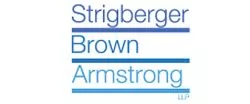An application was brought under rule 14.05(3)(d) of the Rules of Civil Procedure to determine rights that depend on contract interpretation. The applicant was National Gallery of Canada ("National Gallery") and the respondents Lafleur de la Capitale ("Lafleur") and Intact Insurance Company ("Intact").
The application relates to two underlying actions arising out of a fatal trip and fall accident that occurred on August 27, 2013 on the National Gallery's premises. Conrad Lafreniere, an employee of Lafleur, was performing routine maintenance work, cleaning leaves and debris, near the entrance ramp to the National Gallery's underground parking garage. As a vehicle approached to enter the garage, Mr. Lafreniere moved over to the edge of the entrance ramp, fell over a concrete ledge, and suffered fatal injuries.
The first underlying action, against the National Gallery, was commenced by Mr. Lafreniere's widow, Ms. Arsenault. The Workplace Safety and Insurance Board ("WSIB") had a subrogated claim in relation to the claim commenced by Ms. Arsenault and payments made, by the WSIB, to her. The second underlying action, against the National Gallery, was commenced by Mr. Lafreniere's mother and siblings pursuant to the Family Law Act.
The National Gallery and Lafleur entered into a Service Contract under which LaFleur was required to supply all labour and equipment to complete the interior and exterior maintenance throughout the premises. Lafleur was also responsible for properly training and supervising its employees and ensuring that all employees wore safety equipment and were kept safe while carrying out their work.
Under the Service Contract, Lafleur also agreed to indemnify and save harmless the National Gallery from all claims, demands, losses, costs, damages, actions, suits, or proceedings arising out of or in connection with its work under the contract.
Lafleur also agreed to obtain a CGL insurance policy under which National Gallery would be added as an additional named insured. The policy was issued to Lafleur by Intact.
In both underlying actions, the plaintiffs claimed that Mr. Lafreniere's fall, and subsequent death, was caused by the negligence or breach of duty of the defendants, National Gallery and the Attorney General of Canada. All of the particulars of negligence, set out in paragraph 8, in the Statements of Claim related to design issues of the building and the property, including the failure to install a fence, railing or protective barrier in the area where Mr. Lafreniere fell, for example.
The National Gallery commenced a third party claim, in both underlying actions, against Lafleur for its failure to properly train Mr. Lafreniere, and also claimed contribution and indemnity from Lafleur.
Intact issued a Commercial General Liability policy to Lafleur. The National Gallery was named as an additional named insured under the policy by way of endorsement. The policy was with respect to the legal liability arising out of Lafleur's operations under the Service Contract.
The court went on to examine the wording of the Services Contract between the National Gallery and Lafleur, in particular the paragraph dealing with "Indemnification by Contractor". This section stated that Lafleur shall indemnify and save the National Gallery harmless from all claims . . . . "based upon, arising out of, related to, occasioned by or attributable to the activities of the Contractor, the Contractor's servants, agents . . . in performing the Work . . . "
The issue for the court was whether Lafleur and Intact owed a duty to defend the claims against the National Gallery in the underlying two actions.
In ultimately deciding in the negative, the court reviewed the leading case law, in this regard:
- an insurer is required to defend a claim on behalf of an insured when the facts alleged in the pleadings, if proven true, would require the insurer to indemnify the insured for the claim: Progressive Homes Ltd v. Lombard General Insurance, 2010 SCC 33 (CanLII)
- the duty of defend should, unless the contract of insurance indicates otherwise, be confined to the defence of claims which may be argued to fall under the policy: Nichols v. American Home Assuance Co., 1990 SCC (CanLII)
- where there are multiple claims, or where only some of them are potentially covered, a court must assess the substance or the "true nature" of each claim contained within the pleadings to see if it falls within the scope of coverage: Papapetrou v 1054422 Ontario Ltd.2012 ONCA 506 (CanLII)
Following its review of these cases, the court agreed that the question of whether the duty to defend extends to the whole claim depends on the specific pleadings at issue and the resulting determination of the "true nature" of the claims.
In terms of the facts, in this application, the court concluded that in the underlying action brought in the name of Ms Arsenault, for WSIB's subrogated interest, there was no duty on Intact to defend the National Gallery, for the following reasons:
- The nature of the claim was really one of a subrogated workplace claim
- The CGL coverage contained an exclusion for "Worker's Compensation and Any Obligation of the Named Insured under a Workers' Compensation plan"
- The CGL coverage also contained an exclusion for bodily injury to an employee of the Insured arising out of and in the course of employment; Mr. Lafreniere was not an employee of the National Gallery nor in the course of employment with the National Gallery at the time of the accident
- The Services Contract required that the National Gallery would be added as an additional insured – it was not listed as a named insured
- The Certificate of Insurance required that the National Gallery was an additional Insured but only insofar as Legal Liability arising vicariously out of the operations of the Named Insured
With respect to the underlying action brought by the FLA claimants, the claim alleged that Mr. Lafreniere's death was caused by the negligence of the National Gallery as occupier. The court found that the allegations in the Statement of Claim related to design issues of the building and the property and that the indemnity provisions in the policy must be read in conjunction with the allegations in the Statement of Claim.
The wording of the indemnity provision made it clear, to the court, that indemnity was "based upon, arising out of, related to, occasioned by or attributable to the activities of the Contractor." Lafleur was the Contractor and was not named as a party in the Statement of Claim. There were no allegations in the Statement of Claim that alleged negligence or tortious activities of Lafleur so no indemnification could be triggered. The allegations in the Statement of Claim related to design and control by the National Gallery as occupier and, therefore, could not be related to or attributable to the activities of Lafleur.
The court went on to state that, on its face, the CGL policy would cover bodily injury and would be for the type of loss that was sustained. Even though there were no exclusions that applied, the major challenge, for National Gallery, was that the allegations in the Statement of Claim fell outside of the indemnity agreement.
The court concluded that the allegations in the Statement of Claim did not arise out of the activities of the Contractor, Lafleur. There were no allegations in the Statement of Claim that Lafleur or its servants did anything wrong; that is why the claim falls outside of the indemnity agreement.
Based on this analysis, the court found that neither Lafleur or Intact owed the National Gallery a duty to defend.
While this case does not offer anything new about the duty to defend, it provides a good analysis of the issues that arise in duty to defend disputes and a reminder that the allegations in the Statement of Claim must be carefully considered, along with the wording in the indemnity provision of the contract.
See: National Art Gallery v Lafleur de la Capitale Inc., 2018 ONSC 2921 (Can LII)
The content of this article is intended to provide a general guide to the subject matter. Specialist advice should be sought about your specific circumstances.

